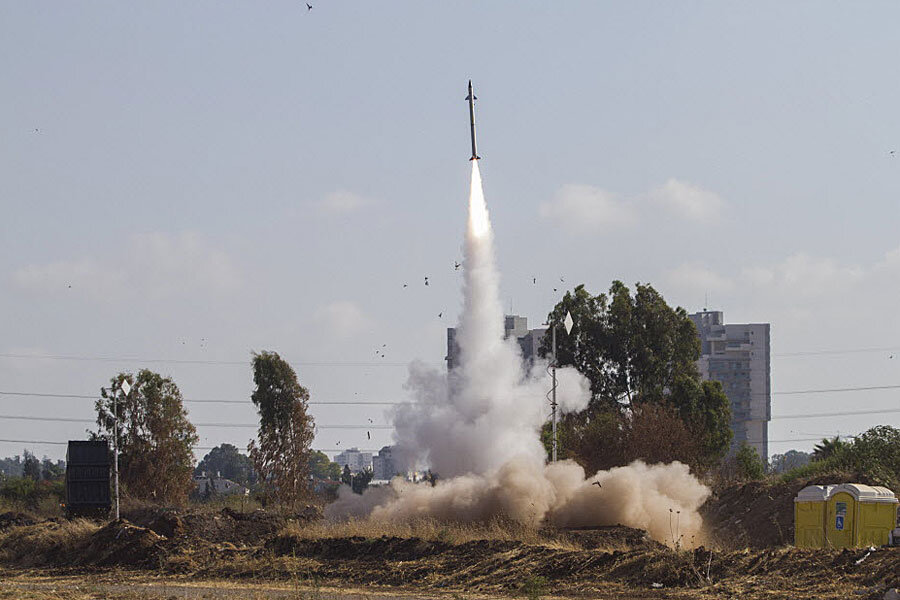Israel vs. Hamas: The conflict by the numbers
Loading...
In light of The Economist’s index during the last Israeli offensive in Gaza in November 2012, here are some numbers from July 8-July 10 2014.
Number of Palestinians in Gaza killed by the Israeli military: At least 82, according to the Palestinian Ministry of Health via Al Akhbar news service.
Number of Israelis killed by Hamas rockets from Gaza: 0, according to news reports.
Number of Palestinians killed who are younger than 16 years-old: At least 21, according to the Palestinian Ministry of Health via Al Akhbar news service.
Number of Israeli civilians injured by Hamas: 9 injured, according to The Washington Post.
Number of Israeli soldiers injured by Hamas: 2 injured, according to CNN NewSource.
Number of rockets fired at Israeli cities: At least 470, according to The Los Angeles Times.
Number of incoming rockets intercepted by Iron Dome: 72 (with the rest falling in open areas), according to Reuters.
Percent of total rockets intercepted by Iron Dome: 27 percent, according to The New York Times.
Percent of incoming rockets intentionally intercepted by Iron Dome: 90 percent (up from 85 percent in 2012), according to Reuters.
Estimated cost of an interception by Iron Dome: $100,000, according to The New York Times.
Number of Iron Dome batteries: Seven, according to The New York Times.
Cost of one Iron Dome battery: $55 million, according to The New York Times.
Cost of a Qassam rocket: $800 according to The Jerusalem Post.
Range of a Qassam rocket: 3.7-7.5 miles, according to an IDF spokesperson.
Range of a M-302 rocket: 93 miles, according to The Free Republic.
Number of M-302 rockets in Hamas' arsenal: Several dozen, according to Haaretz.
Estimated number of rockets that Hamas has in its arsenal: 10,000, according to USA Today.
Number of Israeli reservists called up: 20,000, according to The Los Angeles Times.
Number of targets struck by Israel in the past three days: 750 sites, according to The New York Times.
Number of Israeli traffic fatalities in 2013: 303 persons, according to The Jerusalem Post.
Economic cost to the Gaza strip: unknown.
Economic cost to Israel: 8.5 billion shekels, US$2.5 billion, according to The Jerusalem Post.
GDP per capita in the Gaza strip: $876, according to The Washington Institute.
GDP per capita in Israel: $32,500, according to CIA Factbook.
Number of Palestinians living in Gaza: 1.7 million people, according to The Jerusalem Post.
Number of Palestinians in the West Bank: 2.7 million people, according to The Jerusalem Post.
Number of Jewish Israelis: 6.1 million people, according to The Daily Mail.
Number of non-Jewish Israelis: 2 million people, according to The Daily Mail.
Size of Israeli Defense Forces: 176,000 active personnel, according to CNN.
Number of Hamas militants: 20,000, according to Reuters.






